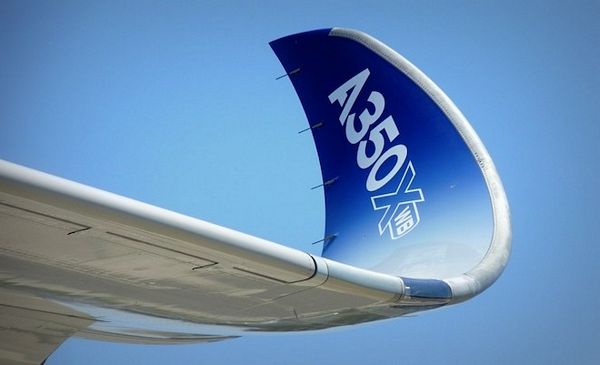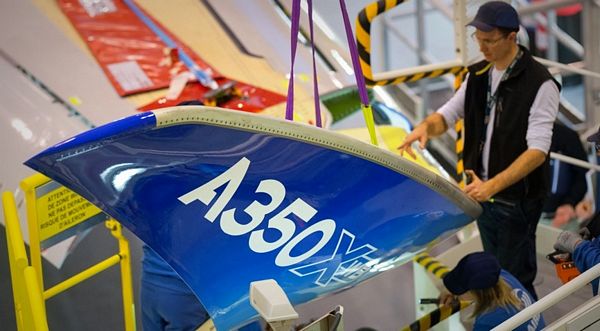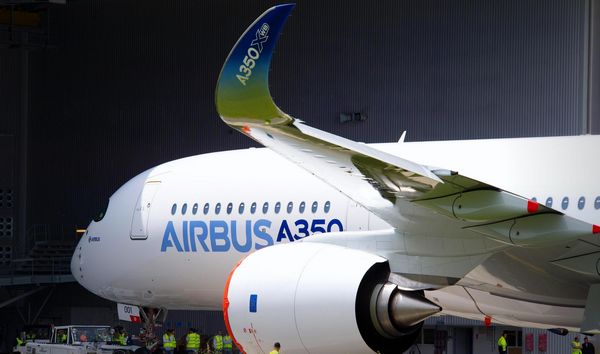
The “sharklets,” the signature blended winglets, on the new Airbus A350-XWB sweep 5.20m from its leading-edge attachment to its rear tip and give the aircraft a total wingspan of 64.8m (212ft).
Customarily, wingtip devices are arrow-shaped surfaces attached to the tip of each wing of a fixed-wing aircraft. They improve the overall efficiency of aircraft by reducing aerodynamic drag through partial recovery of the tip vortex energy. This results in saving fuel, lowering noise emissions, and improving take-off performance. Wingtip devices also enhance aircraft handling characteristics and improve safety for aircraft following the aircrafts with wingtip devices.

Blended winglets are special types of wingtip devices that are attached to the wing with smooth curve instead of a sharp angle. Blended winglets aim to reduce interference drag at the seams between the wings and the winglets.
Airbus pioneered the use of wingtip devices beginning with the Airbus A300 and Airbus A310 jetliner programs. Both the Airbus A300 and the Airbus A310 aircraft were fitted with wingtip fences that helped trim down the effects of the aerodynamic drag created by the spiral-shaped vortices at the wingtips of any aircraft during flight.

Recommended Reading
- ‘Airbus: The Complete Story’ by Bill Gunston
- ‘Boeing versus Airbus: The Inside Story of the Greatest International Competition in Business’ by John Newhouse